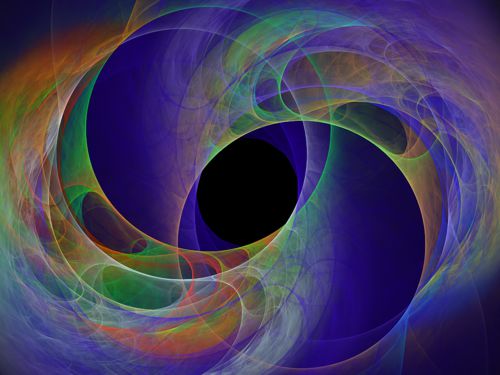
Connection Without Attachment: Part II
Introduction
In today’s follow-up blog to Part I, Love More, Care Less, we will explore connection without attachment, the second part of a wisdom pearl that serves our best interests. It is one of my favorite life-game navigation guides that, with practice, will harmonize with who we essentially are.
Here’s the quote from last week, with the addition of today’s focus in bold.
“You can’t love that which you care about, and you can’t connect to that which you are attached.” Lono Ho’ala
Upon closer examination, it is plain to see the two belong together.
What does connection without attachment mean?
While connection stands on mutual respect and understanding, attachment is fear and need-driven. It is essential to realize that there are rich benefits to connecting without attaching. For example, when we are attached, and bound to something or someone, we are more likely to feel stuck and stay in a situation that is not healthy for us.
Why should we even care about this?
It cannot be emphasized enough that connecting without attachment can be a life-changing practice that galvanizes and accelerates awakening. We see and trust ourselves more clearly as we develop this skill, thus accepting ourselves for who we are, not for what we have, expect, or assume.
What are some of the challenges we might face?
All of us run into problems when we are attached. I cannot count how often I’ve heard someone say, “I always take on too much.” We can all relate, and worse, keep doing so until the stress, suffering, and wasted time wakes us up, and we begin to find out how liberating a simple “no” can be.
It is worth the effort to stop and self-reflect on this pattern long enough to see that it’s deeply toxic to our well-being. It appears like a simple irritation, but this particular attachment triggers frustration, resentment, anger, false assumptions, expectations, and other debilitating influences. It’s a path of misery. The remedy is to find sweet ways to just say “no” when it’s not for you.
Let’s take a quick peek at relationships to take things further. When we are attached, especially in intimate relationships, the attempts at control cause conflict and unhappiness. Furthermore, we feel over-emotional and generally out of balance, giving away our power and judging ourselves while projecting the judgment onto those we love. When we care too much and are attached, we wonder where the love and connection went. We can return to these when we realize that to do so is in our own hands. Practice! Breathe! Practice! Breathe! Practice!
The benefits of connection without attachment.
We can condition ourselves to relate via our minds and hearts in loving, open, non-judgmental, and non-reactive ways. This means being present in the moment and accepting all of life as it is rather than as we wish. When we are accessible and open, new vistas of experience begin to present themselves.
A little mirror of connection without attachment.
A dear friend spearheaded a group of wise-women artists to do an art project. The task is to walk about the streets of the Historic District here in Cuenca, Ecuador, in pairs and threesomes. We each have our eyes peeled for spotting suitable three-dimensional designs upon which to place vellum sheets, where we “rub” the design with oil pastels and watch the magic appear on the vellum. Our collective vision is to have a gallery showing to benefit those less fortunate than ourselves – if we can create pieces suitable for framing and a gallery showing. So far. So good.
Some of the group layer their rubbings from iron works, plaques, street tiles, doors, window guards, etc., one on top of another, while others focus on developing a single theme or shape. Each chooses their vellum size for the rubbing, the color oil pastels, and how the paper is placed. No one interferes with a “Why don’t you . . .?” or “This one looks like it might work for you . . .” or “I think you should . . .”
Instead, we connect by holding the vellum firmly into place where the artist wants it. They are patient and quiet while the artist contemplates and creates her piece. Once done, we tuck the supplies into bags and move forward. Our connection remains throughout, but we switch our roles back and forth effortlessly. It’s so much fun for a good cause, and childlike energy abounds. Connection without attachment is pure joy. The project is a moving mediation for me and I am grateful.
So, how do we build connection without attachment?
One way to connect without attaching is to focus on our own needs and feelings. It can be difficult at first, but it is essential to remember that we are responsible for our own happiness.
We can also try to be more present at the moment and focus on our own experience. We can endeavor to be more understanding and compassionate towards ourselves, which in turn helps us to accept and connect with others.
Trusting life causes us to be more open with our feelings. We can share our sentiments with others, even if we are unsure how they will react. (unless in a violent situation. Always use common sense!)
Another practice is to be present with the other person. This means being fully in the moment and not letting our thoughts wander. Additionally, we can take steps to be curious about the other person, which means asking questions and listening to the answers.
“We are born with two ears and one mouth for a reason, to listen twice as much as we talk.” Epictetus (Greek Sage 55 AD)
Lastly, we can try to understand the other person’s point of view. This means putting ourselves in their shoes and seeing things from their perspective. It works to put aside our attachments to things being a certain way.
Conclusion
Connection is loving and freeing. So is Love. Attachment is fear-driven. So is caring. When we love without caring and connect without attaching, we open ourselves to a world of profound inner freedom and joy. We are more present, compassionate, grateful, forgiving, flexible, and more accepting of how life is. We own the freedom that comes from living a life without those pesky “stickies.”
What is your perspective? We’d love to hear your contributions in the comments. Thank you.
With love and connectivity,
Kaye



